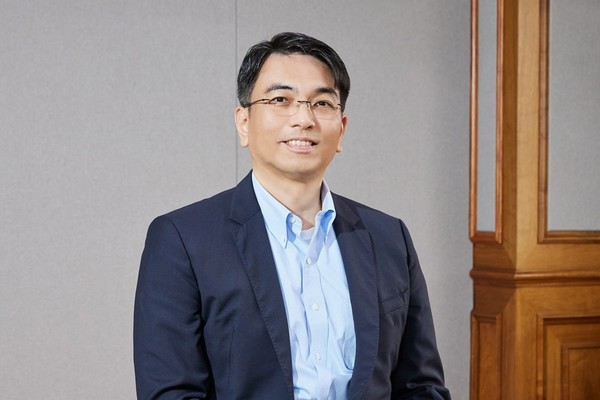Hanall Biopharma targets global autoimmune disease market
Hanall Biopharma is one of the most frequently mentioned Korean drugmakers when analysts forecast the arrival of a global blockbuster drug. In developing autoimmune disease treatment candidate HL161(batoclimab), there are many ongoing clinical trials of batoclimab by partners in the U.S. and China to secure six indications.
The company is also working on HL036(tanfanercept) to make it the world’s first biologic drug for dry eye treatment.

Then, when can the company commercialize the two investigational drugs, and what are the company’s strategies for the global market? Korea Biomedical Review met with Jeong Seung-won, co-CEO of Hanall Biopharma handling worldwide R&D and innovation strategy, to learn about the company’s current status and future strategy.
Hanall Biopharma’s autoimmune disease treatment HL161 is drawing the most attention among the company’s pipelines.
The global autoimmune disease market is estimated to be about 10 trillion won. The market size is expected to grow further with diverse indications and drug forms.
Hanall Biopharma is targeting this market with HL161.
HL161 is under late-stage trials conducted by partners in the U.S. and China.
Hanall Biopharma's U.S. partner Immunovant plans to start a phase 3 study in early 2022 to treat myasthenia gravis. Also, next year, it will begin a phase 2 study to treat warm autoimmune hemolytic anemia and resume a phase 2b trial to treat thyroid eye disease.
In China, its Chinese partner Harbour Biomed studies the drug’s effect against five autoimmune diseases -- myasthenia gravis, optic neuromyelitis, thrombocytopenia, thyroid eye disease, and chronic inflammatory polyneuropathy. Harbour Biomed plans to begin a phase 3 study of myasthenia gravis late this year.
Jeong said patients with early symptoms of many autoimmune diseases such as myasthenia gravis and thyroid eye disease are typically given steroids and immunosuppressants. If they progress to severe illness, physicians use immunoglobulin injections and plasmapheresis because there is no treatment, he said.
“HL161 is expected to be an effective therapy that can rapidly reduce overexpressed autoantibodies in autoimmune disease patients,” Jeong said.
Confident about commercializing the drug, he said HL161 would be an effective and convenient drug for patients who have no treatment option.
He emphasized that HL161 is easy to administer. While other rival new drug candidates are intravenous injections, HL161 is a subcutaneous injection allowing patients to administer themselves. He said it takes less than 10 seconds to get the HL161 shot, which can also reduce costs.
Also, Hanall Biopharma is developing HL036 to make it the world’s first biologic drug for dry eye treatment. In China, Harbour Biomed started a phase 3 study of dry eye treatment early this year and plans to derive topline results by next year.
Jeong rated HL036’s market value as “limitless.”
According to Jeong, there is no authorized biologic medicine for dye eye disease. If HL036 enters the market, it will become the first biologic drug to have an anti-inflammation effect, he said. In 2019, Novartis acquired Takeda Pharmaceutical’s dry eye treatment Xiidra. The upfront payment alone was $3.4 billion, Jeong went on to say. “As patients with dry eye are increasing steadily, the market will become larger,” he said.
Regarding the second phase 3 study of HL036 (VELOS-3), which is expected to initiate as early as this month, conducted by Hanall with partner Daewoong Pharmaceutical in the U.S., Jeong said the company aims to replicate the drug’s improvement in central corneal staining score (CCSS), seen in the first phase 3 study (VELOS-2) compared to placebo.
The second phase 3 study has different inclusion criteria, based on the first study results, Jeong explained. “We will exclude patients who show a placebo effect, and unlike the first phase 3 study, the VELOS-3 will enroll patients with a score of 2 or higher in the middle of the cornea,” he said.
Asked whether Hanall Biopharma could license out HL036 to a market other than the Chinese one, Jeong said he has been thinking about it “all the time.” “Depending on phase 3 trial results next year, the global pharmaceutical industry’s attention to HL036 will increase. Then, there will be more chance of a licensing deal,” he said.
Jeong joined Hanall Biopharma as head of HPI, a U.S. subsidiary of Hanall Biopharma, in June last year and became co-CEO of Hanall Biopharma in March this year. He graduated from Yonsei University College of Medicine, completed MBA at MIT Sloan School of Management, and accumulated experience in global business development and international trials at multinational drug companies such as Novartis and UCB.

